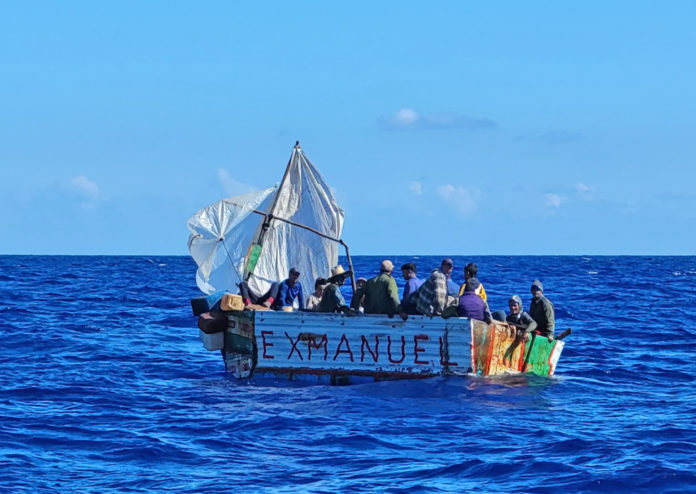
Putting their lives into handmade boats, Cuban migrants set course from their depressed country through the dangerous Florida Straits en route to the U.S. A food shortage, rising inflation, power outages and many years of political repression are among the reasons for their voyages to the states.
More recently, the COVID pandemic has further stressed the already-strapped country to many people’s breaking point. To Cuban migrants, it’s the journey to a new beginning.
In groups, Cuban migrants jump aboard their vessels and ultimately find their way onto the waters off the Florida Keys. The vessels they use are often referred to as chugs due to the sounds of the ingenious lawn mower or car motors used to power the vessels.
“Our primary concern is people’s safety on the water, and these chugs are not safe or seaworthy vessels. They are basically sinking as soon as they leave shore, and the only question is whether they’ll make it to land before that happens,” said Coast Guard Lt. Christopher Papas, spokesman for Coast Guard Sector Key West. “The challenge is that the public sees only the limited amount of activity they can see either from land or from a recreational boat, and there are multi-jurisdictional protocols in place, but each case is handled on a case-by-case basis, and we are dealing with a large number of cases these days.”
Some chugs are intercepted by the U.S. Coast Guard, which transports migrants back via cutter to their native country. But chugs making landfall without interdiction on the water draw response from the U.S. Customs & Border Protection.
More migrant arrivals mean more chugs along the mangroves, beaches and shores of the Keys. They tell a story of survival and desire for something better, which is why they’re featured in various museum exhibits and places in the Keys. For the ones not taken, however, they add to the growing derelict vessel problem handled by several agencies.

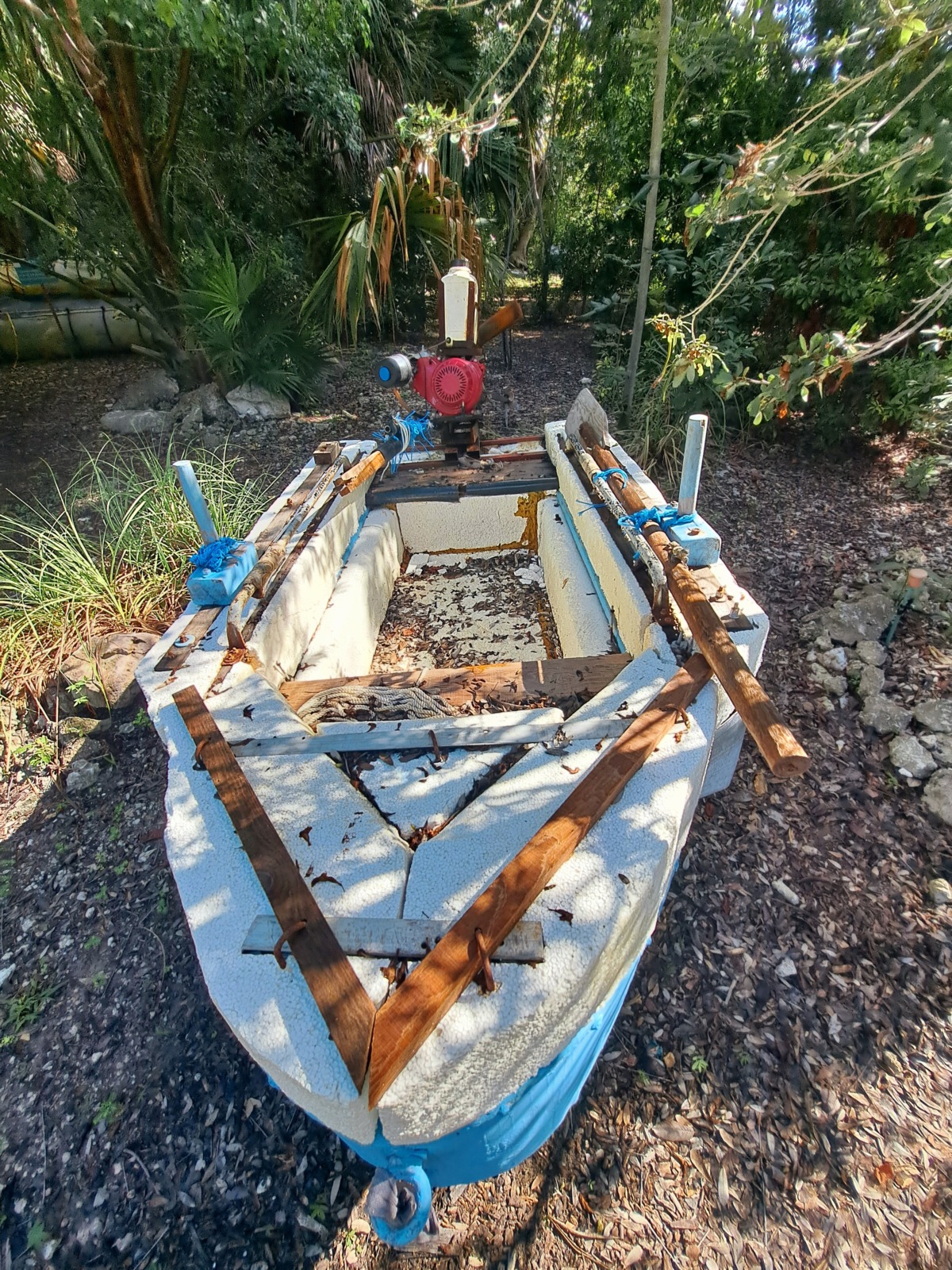
The Key West Tropical Forest & Botanical Garden nearly a decade ago installed the first known public exhibit of Cuban chugs at the garden, where more than a dozen handmade vessels of dubious seaworthiness detail people’s desperation. Executive Director Misha McRae told the Keys Weekly the garden is currently applying for a grant to help preserve the chugs that are displayed outside.
But many of the more recently arrived floating migrant chugs become a navigational or environmental hazard, and are swiftly removed by the U.S. Coast Guard. However, for vessels not posing an immediate threat, Coast Guard funds allow only for removal of hazardous material (read: oil, gas or other dangerous fluids) from the vessel, not relocation. A chug that isn’t a hazard remains where it is until someone interested in it for display picks it up. Otherwise, it ends up on the list as a derelict vessel.
The Monroe County Marine Resources Office works with the Florida Fish & Wildlife Conservation Commission, the Monroe County Sheriff’s Office, and other law enforcement partners to remove derelict vessels. Jason Rafter, public information officer with FWC, said they’re getting three to four a week.
“We’re trying to keep up with them,” he said. “Every migrant landing leaves something behind. We’re trying to get rid of them as fast as they come in, but they arrive at a much faster pace.”
Brittany Burtner is senior administrator of the county Marine Resources Office, which on average oversees the removal of 60 to 80 derelict vessels per year. Whether it’s an abandoned sailboat or a Cuban chug, Burtner said her office will remove a derelict vessel, with help from prequalified marine contractors, from the county waters once they receive authorization from law enforcement.
“Currently, we are using our regular process to handle the removal of migrant vessels,” Burtner said. “It is the vessel’s owner who is responsible for removal. However, when all attempts by law enforcement to locate and hold the boat owner responsible have failed, Monroe County utilizes Boating Improvement Funds and grant funding from the Florida Fish & Wildlife Conservation Commission to assist with removal efforts.”
The removal of 60 derelict vessels a year costs about $230,000. Around $2.6 million was spent to remove derelict vessels between 2010 and 2020.
Those not slapped with a sticker for removal can serve as a history token, a tourist attraction or decoration. At the Anacostia Museum in Washington, D.C. is a small, improvised chug that transported two Cuban men who were bound for a better life in the states in July 1992. Built in secret out of scavenger materials, stacked styrofoam planks held together with tar were carved into the shape of a boat and placed on a wooden frame. The chug’s exterior then received a tar coating and tarred cloth covered the hull for further protection against both water and shark penetration.
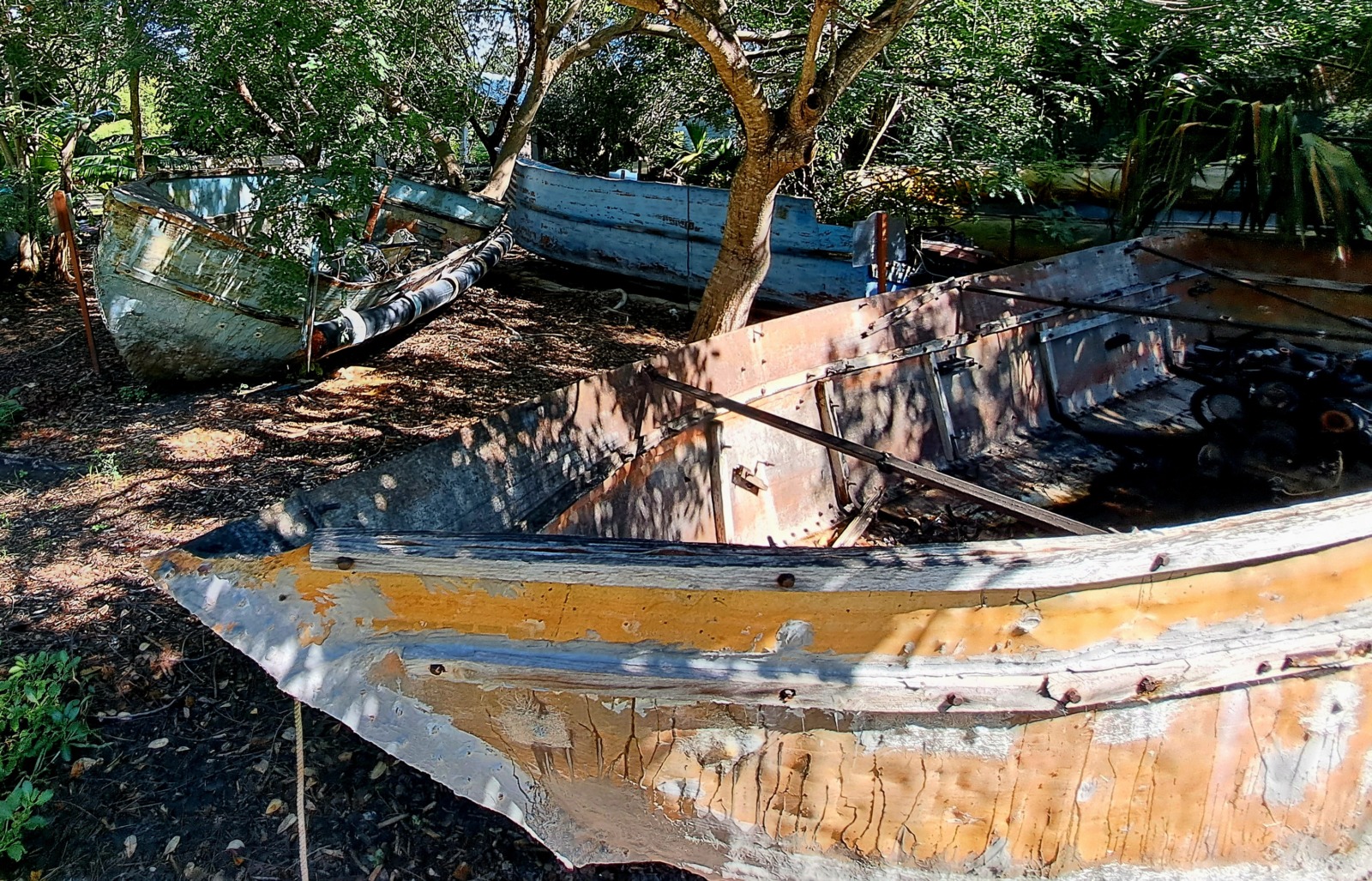
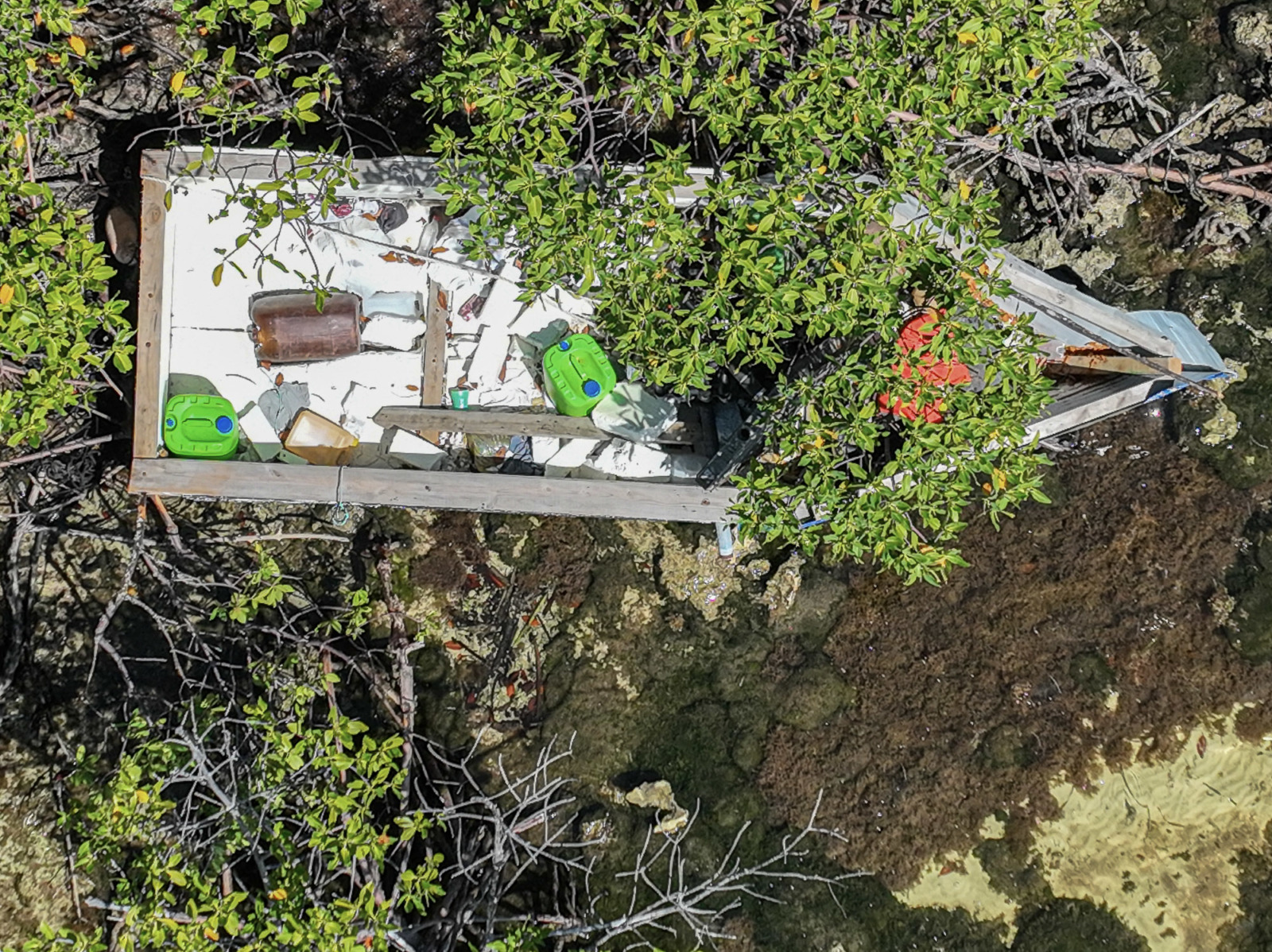
Brothers to the Rescue, a nonprofit founded in 1992 by Cuban exiles in the U.S., rescued the rafters after searching for them via plane. That led the U.S. Coast Guard to them roughly 35 miles off the coast of Miami. The vessel was ultimately placed into the hand of Humberto Sanchez, who worked with the Brothers to the Rescue. He ultimately gave the raft to the Anacostia Community Museum.
Sitting outside the Keys History & Discovery Center in Islamorada is a green wooden Cuban vessel. Now an exhibit for locals and tourists to view, the chug shows one of the several modes of transportation immigrants from Cuba used to reach the Florida Keys. The display is outside the museum and open to the public.
“We have been told this boat is actually considered a ‘Cadillac,’ as most arrived on rafts, chugs and balsas,” said Rich Russell, board chairman, following the exhibit’s arrival this summer.
In Marathon, the Lagoon on Grassy Key continues to amass a small armada of chugs in various conditions, turning them into canvases for local artists to create paintings that pay tribute to the boats’ origins and the struggles of those they carried.
With a seemingly endless supply of vessels, many private citizens have wondered if they are legally permitted to make one of the chugs their own yard ornament — or even a repurposed bar. When it comes to these inquiries, there’s an official answer, even as it pertains to vessels without any form of registration or ability to identify an owner.
“The state certainly cannot give anybody permission to take someone else’s property,” said FWC Capt. David Dipre.
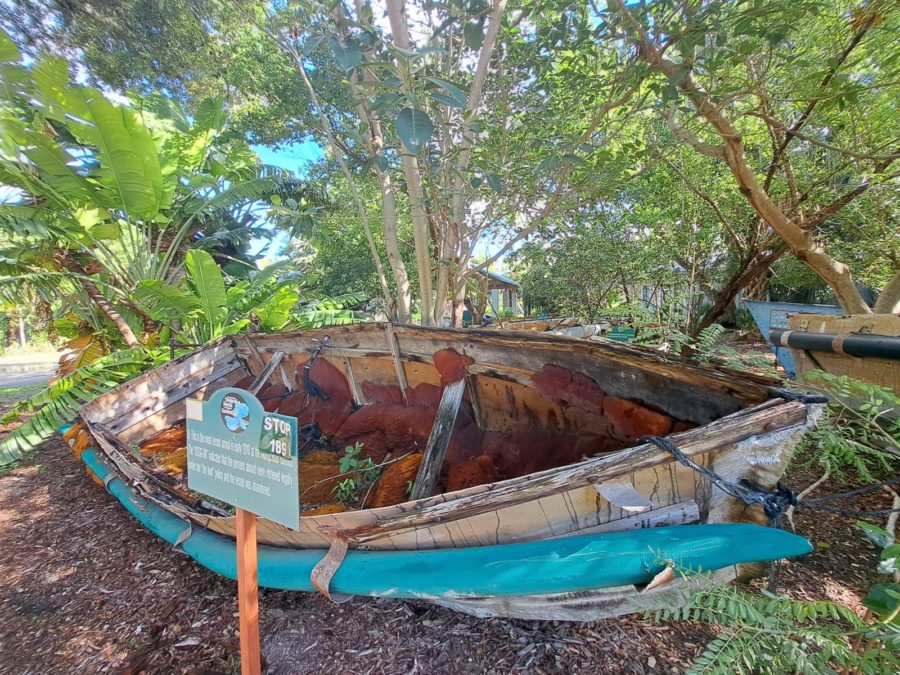

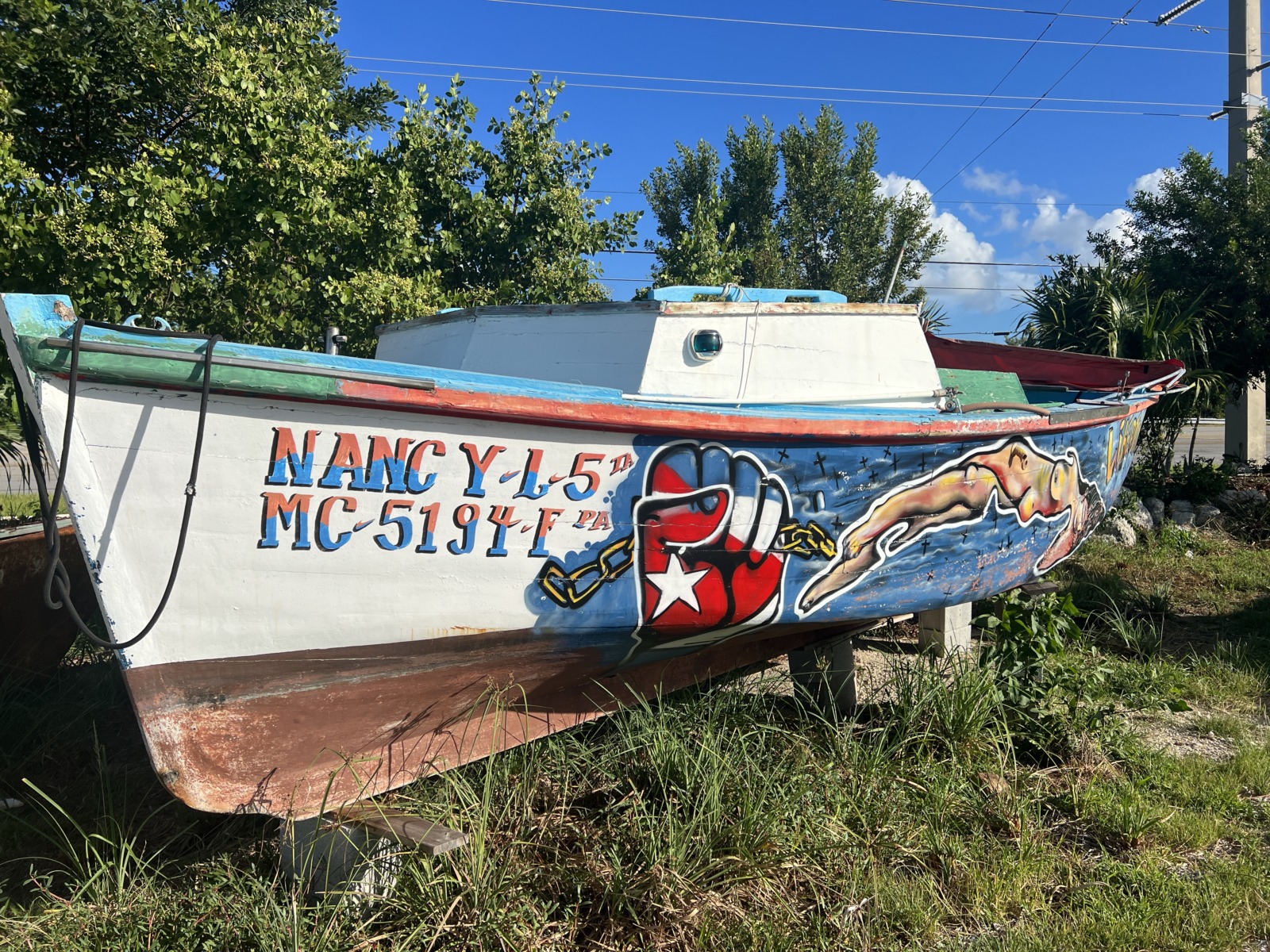
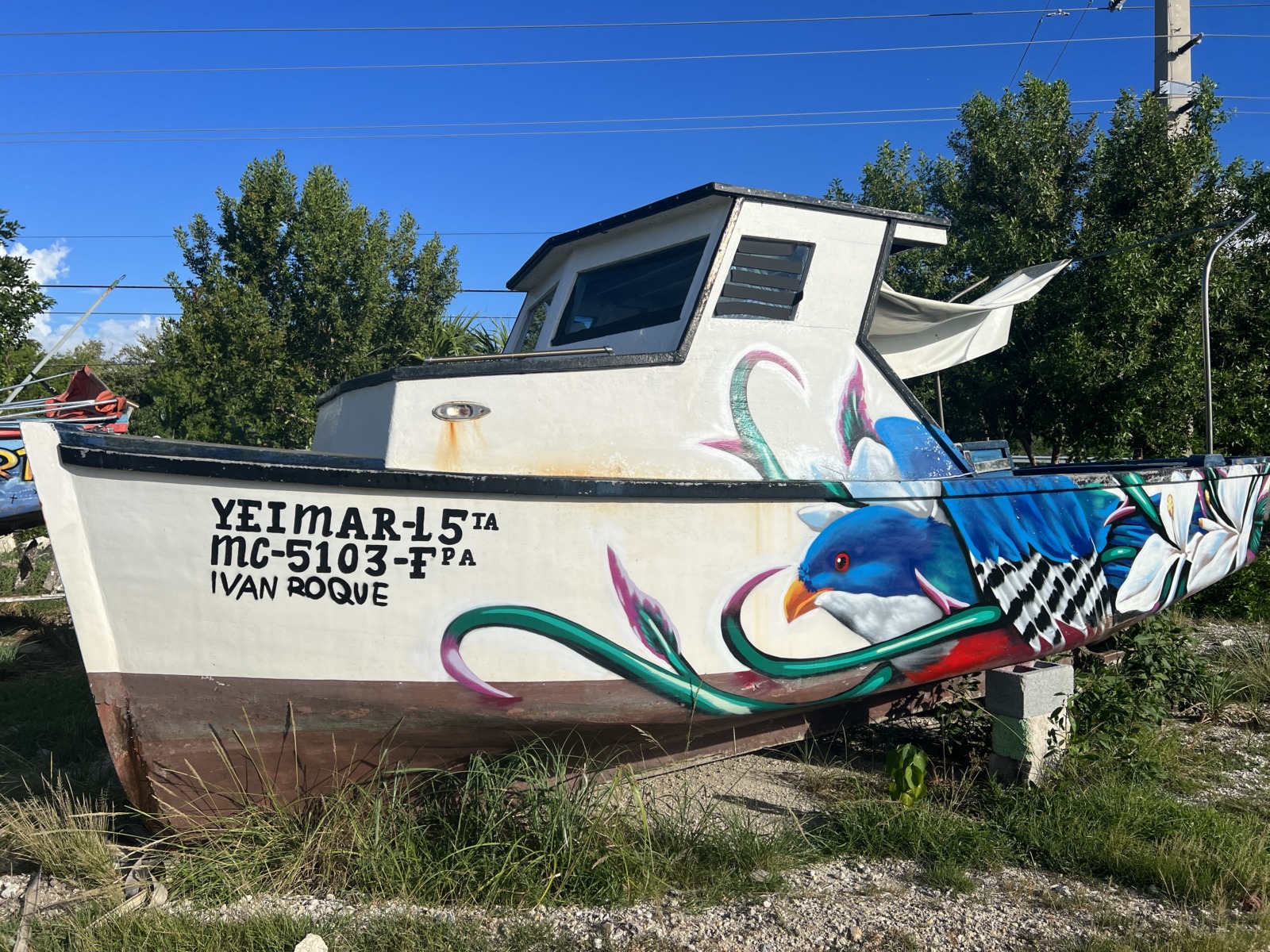
But, read between the lines. With dozens of new chug installations popping up in front of restaurants, hotels and homes throughout the islands, the Monroe County Sheriff’s Office arrest page has no mugshots of individuals picked up for removing what essentially amounts to unclaimed debris from Florida Keys waters.
If you see a migrant chug on the water, especially if it appears in distress, the Coast Guard appreciates the boating public calling in the vessel’s location. Coast Guard Sector Key West handles all of the Florida Keys and can be reached on VHF radio channel 16 or by phone at 305-292-8727.
Alex Rickert and Mandy Miles contributed to this report.













